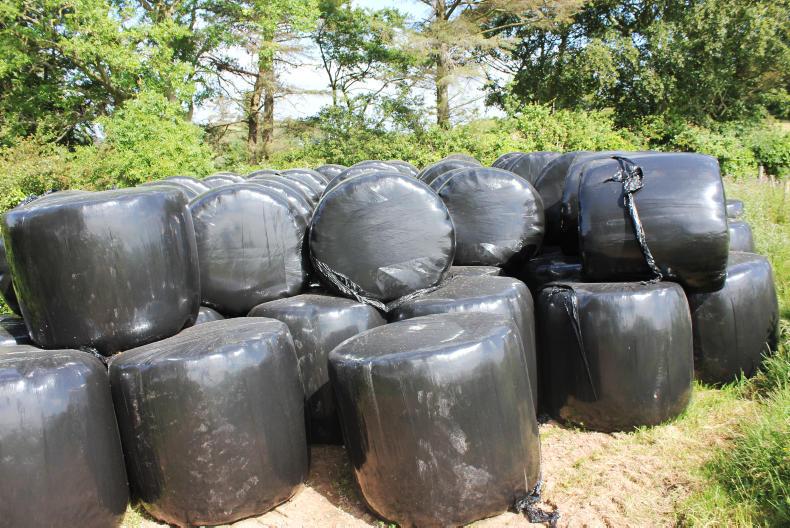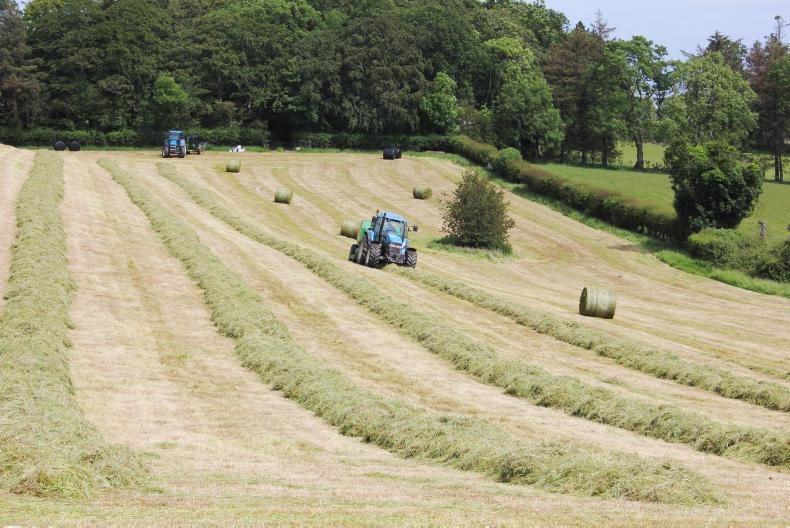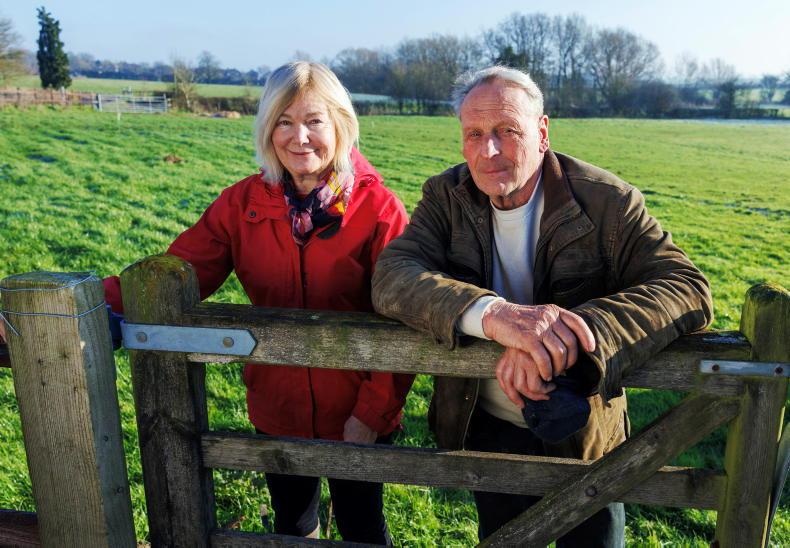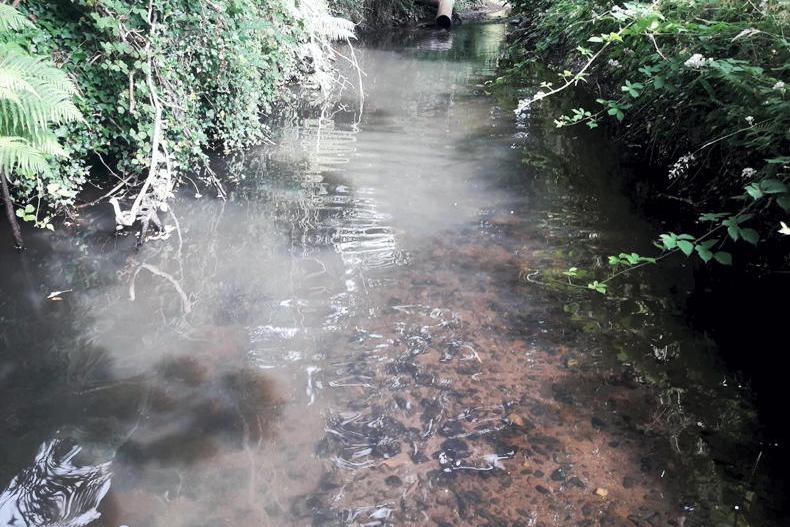Considering the popularity and importance of baled silage in farming systems all over Ireland, it is surprising that a couple of anomalies should be so prominent.
The first is the lack of an analysis when bales are offered for sale, and the other is the selling price (at least in a normal year).
I recently finished making next winter’s fodder.
After a protracted and frustrating five-week spell of mixed weather that swung from sunny and dry to extremely wet, and with occasional days that included both these conditions, almost 400 bales were wrapped and stacked.
Doing some rough calculations on a scrap of paper, it quickly became obvious that there isn’t much profit to be had if I decided to sell my bales.

The stack of well-shaped bales.
My best costings would suggest that each bale probably costs £15 to initially make, and this only allows for a short transport distance (ie stacked in the corner of the same field, or moved to a yard nearby).
Apart from those spells when mass panic sets in and the farming community pays about £30/bale, they mostly trade for anywhere between £14 and £22.
But if there is loading and substantial transporting to be done, my own notion would be that my bales sold in the wintertime and delivered to someone’s yard would need to start in the high 20s before any genuine profit is generated.
Analysis
However, the absence of any sort of chemical analysis to accompany bales that are offered for sale may be something of a blessing in disguise for the vendor.
If I attempted to sell my May-baled silage, I would be on a hiding to nothing.
It should be high-quality fodder, but it is not a saleable commodity
Young, leafy grass, only nine bales per acre, tedded a couple of times (then the added cost of rowing up) and the stack resembling a room full of extremely drunk people. It should be high-quality fodder, but it is not a saleable commodity.
If, on the other hand, I had let it grow out into a huge crop of stemmy grass, it would have yielded about 16 bales to the acre (thus reducing all the per acre charges), would have stacked beautifully and been easy to build onto a trailer without the risk of total collapse on the road.
As for the lack of perceived quality, quite the reverse is the most likely outcome.
If I had a fiver for every time I’ve heard a farmer opine that leafy silage only runs through the cattle and does them no good at all, I’d have enough money to take myself away on a long holiday.
Each to their own I suppose, but I’ve never agreed with that school of thought.
Variable
If I had to predict the quality of this farm’s silage, the most likely description would be highly variable. It will be tested during the autumn or winter, and I’m expecting a lower feed value than in recent years.
The bales that look like a semi-melted Rolo
One theory will be interesting to apply: my guess is that the shape of the bales currently in stacks will be an accurate indicator of feeding value.
The bales that look like a semi-melted Rolo may turn out to be far more nutritious than the last ones made (after all the bad weather), which are sitting perfectly, despite being piled on top of each other.
If those good-looking, square-shouldered bales turn out to have a low ME figure, perhaps I should offer them for sale – after all, it’ll not run through the cattle, will it?
Read more
Farmer Writes: stress levels up with grass down
Farmer Writes: livestock puts silage analysis to the test
Considering the popularity and importance of baled silage in farming systems all over Ireland, it is surprising that a couple of anomalies should be so prominent.
The first is the lack of an analysis when bales are offered for sale, and the other is the selling price (at least in a normal year).
I recently finished making next winter’s fodder.
After a protracted and frustrating five-week spell of mixed weather that swung from sunny and dry to extremely wet, and with occasional days that included both these conditions, almost 400 bales were wrapped and stacked.
Doing some rough calculations on a scrap of paper, it quickly became obvious that there isn’t much profit to be had if I decided to sell my bales.

The stack of well-shaped bales.
My best costings would suggest that each bale probably costs £15 to initially make, and this only allows for a short transport distance (ie stacked in the corner of the same field, or moved to a yard nearby).
Apart from those spells when mass panic sets in and the farming community pays about £30/bale, they mostly trade for anywhere between £14 and £22.
But if there is loading and substantial transporting to be done, my own notion would be that my bales sold in the wintertime and delivered to someone’s yard would need to start in the high 20s before any genuine profit is generated.
Analysis
However, the absence of any sort of chemical analysis to accompany bales that are offered for sale may be something of a blessing in disguise for the vendor.
If I attempted to sell my May-baled silage, I would be on a hiding to nothing.
It should be high-quality fodder, but it is not a saleable commodity
Young, leafy grass, only nine bales per acre, tedded a couple of times (then the added cost of rowing up) and the stack resembling a room full of extremely drunk people. It should be high-quality fodder, but it is not a saleable commodity.
If, on the other hand, I had let it grow out into a huge crop of stemmy grass, it would have yielded about 16 bales to the acre (thus reducing all the per acre charges), would have stacked beautifully and been easy to build onto a trailer without the risk of total collapse on the road.
As for the lack of perceived quality, quite the reverse is the most likely outcome.
If I had a fiver for every time I’ve heard a farmer opine that leafy silage only runs through the cattle and does them no good at all, I’d have enough money to take myself away on a long holiday.
Each to their own I suppose, but I’ve never agreed with that school of thought.
Variable
If I had to predict the quality of this farm’s silage, the most likely description would be highly variable. It will be tested during the autumn or winter, and I’m expecting a lower feed value than in recent years.
The bales that look like a semi-melted Rolo
One theory will be interesting to apply: my guess is that the shape of the bales currently in stacks will be an accurate indicator of feeding value.
The bales that look like a semi-melted Rolo may turn out to be far more nutritious than the last ones made (after all the bad weather), which are sitting perfectly, despite being piled on top of each other.
If those good-looking, square-shouldered bales turn out to have a low ME figure, perhaps I should offer them for sale – after all, it’ll not run through the cattle, will it?
Read more
Farmer Writes: stress levels up with grass down
Farmer Writes: livestock puts silage analysis to the test











SHARING OPTIONS